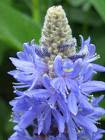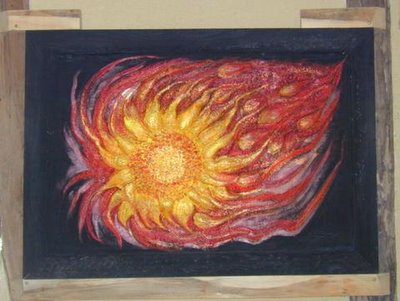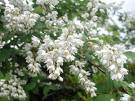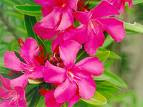[ . BACK to WORLDKIGO TOP . ]
. kame 亀と伝説 Legends about turtles .
- kenmun - see below
::::::::::::::::::::::::::::::::::::::::::::::::::::::::::::::::::::::::::::::::::::::::::::::::::::
Turtle, turtoise, tortoise (kame)
***** Location: Japan
***** Season: Various, see below
***** Category: Animal
*****************************
Explanation
 A turtle looking in all 8 directions
A turtle looking in all 8 directions 八方睨みの亀
turtle making a sound, crying, turtle chirps
kame naku 亀鳴く (かめなく)
kigo for all spring
"turtle reciting the sutras"
kame no kankin 亀の看経(かめのかんきん)
Their sounds remind the Japanese of monks reciting the morning sutras.
. shinshi 神使 the divine messenger .
kame 亀 turtle - at Matsunoo Taisha 松尾大社
:::::::::::::::::::::::::::::::::::::::::::::::::::::::::::::::::::::::::::::::::::::::::::::::::::
sea turtle, umigame 海亀 (うみがめ)
kigo for mid-summer
red sea turtle, akaumigame 赤海亀(あかうみがめ)
blue sea turtle, aoumigame 青海亀(あおうみがめ)
..... shoogakuboo 正覚坊(しょうがくぼう)
Fam. Cheloniidae. Meeresschildkröte
 hawksbill turtle, taimai 玳瑁(たいまい)
hawksbill turtle, taimai 玳瑁(たいまい)
Eretmochelys imbricata. Karettschildkröte
turtle babies, kame no ko 亀の子 (かめのこ)
kigo for mid-summer
pond turtle, zenigame 銭亀(ぜにがめ)
(children of the
Ishigame, Japanese pond turtle) Fam. Mauremys.
Sumpfschildkröte; Schildkrötenbaby
:::::::::::::::::::::::::::::::::::::::::::::::::::::::::::::::::::::::::::::::::::::::::::::::::::
hanachigame 放ち亀(はなちがめ) setting a turtle free
kigo for mid-autumn
Part of the Buddhist rituals to gain good points in the next life. Many kinds of small animals are set free, birds to fly or fish and turtles in the water.
. hanashi kame uri 放し亀売り
vendors of turtles to be set free in Edo .
:::::::::::::::::::::::::::::::::::::::::::::::::::::::::::::::::::::::::::::::::::::::::::::::::::
In Chinese culture, especially under the influence of
Taoism the turtoise is the symbol of heaven and earth, its shell compared to the vaulted heaven and the underside to the flat disc of the earth. The tortoise was the hero of many ancient legends. It helped the First Chinese Emperor to tame the Yellow River, so Shang-di rewarded the animal with a lifespan of Ten Thousand Years. Thus the turtoise became a symbol for Long Life.
It also stands for immutability and steadfastness. We often see stone grave steles on a stone tortoise or reliquiaries standing on it.
The tortoise is also regarded as an immortal creature. As there are no male tortoise - as the ancient believed - the female had to mate with a snake. Thus the turtoise embracing a snake became the protector symbol of the north, but since the word "tortoise" was taboo in Chinese, it was referred to as the "dark warrior" (genbu 玄武 ) and finally became one of the protector gods of the four areas, Zhenwu in Chinese Taoism.
Read more of my story HERE
Turtle, Crane and Daruma san
 © 色いろ遊び
© 色いろ遊び
:::::::::::::::::::::::::::::::::::::::::::::::::::::::::::::::::::::::::::::::::::::::::::::::::::
Worldwide use
Yemen
African Helmeted turtle [Pelomedusa subrufa]
kigo for spring

P.s. subrufa nest once per year. A nest is dug to a depth of approximately 15 cm and the eggs deposited. Eggs are white/grayish and covered with a clear slime. They measure 28-31 mm x 15-18 mm and approximately 4-6 grams. Fertile eggs develop a white spot or area on top and hatching occurs in 65-68 days.
© www.pelomedusa.com
In warm sand
a case for fire ants..
turtle's nest
Heike Gewi, Yemen, May 2008
WKD Yemen Saijiki
*****************************
Things found on the way
Some Cosmic Fun
A well-known scientist (some say it was Bertrand Russell) once gave a public lecture on astronomy. He described how the earth orbits around the sun and how the sun, in turn, orbits around the center of a vast collection of stars called our galaxy. At the end of the lecture, a little old lady at the back of the room got up and said:
"What you have told us is rubbish. The world is really a flat plate supported on the back of a giant tortoise." The scientist gave a superior smile before replying, "What is the tortoise standing on?" "You're very clever, young man, very clever," said the old lady.
"But it's turtles all the way down!"
Russell comments:
If everything must have a cause, then God must have a cause. If there can be anything without a cause, it may just as well be the world as God, so that there cannot be any validity in that argument. It is exactly of the same nature as the Hindu's view, that the world rested upon an elephant and the elephant rested upon a tortoise; and when they said,
"How about the tortoise?"
the Indian said, "Suppose we change the subject."
... the story is patently wise, teaching us that we will never get to the bottom of things.
© More in the WIKIPEDIA !
:::::::::::::::::::::::::::::::::::::::::::::::::::::::::::::::::::::::::::::::::::::::::::::::::::::
 見立浦島 Young Woman Riding a Turtle
見立浦島 Young Woman Riding a Turtle
(Parody of the Story of Urashima Tarô)
Suzuki Harunobu (1725–1770)
. Urashima Taro 浦島太郎 .
:::::::::::::::::::::::::::::::::::::::::::::::::::::::::::::::::::::::::::::::::::::::::::::::::::::
African Spurred Tortoise
(Geochelone sulcata)
“crying tortoise”La tortue qui pleure
To protect his eyes against the sand and the dry climate, it produces tears and the eyes are often wet.
reference : “crying tortoise"
:::::::::::::::::::::::::::::::::::::::::::::::::::::::::::::::::::::::::::::::::::::::::::::::::::::::
. tsurushibina つるし雛 / 吊るし雛 small hanging hina dolls .

With the wish for a long life of 1000 years, like the mythical turtle.
*****************************
HAIKU
. WKD : Kobayashi Issa 小林一茶 .
星待や亀も涼しいうしろつき
hoshi matsu ya kame mo suzushii ushirotsuki
they wait for the stars --
turtle's backside, too
looking cool
Tr. Chris Drake
Issa's diary says this hokku was written on the same day on which Issa went to the monthly haikai meeting led by a leading Edo poet, Suzuki Michihiko (1757-1819), which was held on the 6th of every month. It was a gathering Issa often joined. This particular meeting was on the 6th of the 7th month (July 31, 1805), and Issa wrote the hokku there or soon after. Issa linked verses a few times with Michihiko, but I couldn't find any information about whether renku were written at this meeting in addition to hokku.
The hokku is about the night of 7/7, the
Tanabata star festival. Many people are looking up at the sky, waiting for the Milky Way to rise, since according to a legend that goes back to China, the weaving woman star (Vega) and the oxherd star (Altair) love each other madly but are able to meet only one night a year -- on 7/7, and only if there are no clouds in the sky. If the sky is clear, the weaving woman crosses the Milky Way on a bridge formed by magpies and meets her lover. Many decorations are set up, including ikebana and tall cut bamboo trees with poems and decorations hanging from their limbs. In Issa's time most people stayed up late to eat, drink, and watch the stars, and many stayed up the whole night, as they did on the night of the harvest moon.
In Issa's vision a group of people stand watching the sky with their back to him, and their total absorption in the Milky Way makes them -- and Issa watching them -- feel cool, as if they were momentarily fused with the cool sky, even though the night must be quite hot. It's the feeling of coolness that counts, not the objective temperature. The coolness is so strong at that moment that even a turtle, who seems to be looking up at the same part of the night horizon as the humans, looks cool. Turtles don't wear thin robes the way humans do in summer, yet something about the turtle's stance suggests that it, too, influenced by the night sky, feels cool. This synesthetic hokku seems to be about the power of feelings and the sense of sight to overlap with and influence tactile sensations as well as about the relation of humans and other animals to the cosmos. That it is backsides which strike Issa as being so cool suggests that the absence of individual faces may increase the sensation of non-duality with the universe. Often masks in No drama have a similar effect.
Chris Drake

Turtles enjoying Tanabata
. WKD : Star Festival (Tanabata 七夕).
:::::::::::::::::::::::::::::::::::::::::::::::::::::::::::::::::::::::::::::::::::::::::::::::::::
亀鳴くや男は無口なるべしと
kame naku ya otoko wa mukuchi narubeshi to
the turtle calls ...
a man should better not
talk too much
Tanaka Hiroaki 田中裕明 (1959 - 2004)
:::::::::::::::::::::::::::::::::::::::::::::::::::::::::::::::::::::::::::::::::::::::::::::::::::
俳人のしきりに亀を鳴かせけり
haijin no shikiri no kame o nakase keri
ever so often
haiku poets make
the turtle cry
Yokoi Haruka 横井遥 (born 1959 in Nagasaki)
:::::::::::::::::::::::::::::::::::::::::::::::::::::::::::::::::::::::::::::::::::::::::::::::::::
the turtle is slow;
i capture it with much ease
time to eat it now
a hardshell tortoise.
is there any other kind?
rabbit lost the race
© kpaul.mallasch
:::::::::::::::::::::::::::::::::::::::::::::::::::::::::::::::::::::::::::::::::::::::::::::::::::::
spring moonrise
sea turtles hatch and struggle
toward the waves
Jim Grossmann
baby sea turtles
serenaded on the beach...
me and my guitar
Tom Conally
source : Happy Haiku Forum .
*****************************
Related words
*****
World Turtle Day
May 23
*****
box turtles mating
kigo for spring
. box turtles (Terrapene) .
::::::::::::::::::::::::::::::::::::::::::::::::::::::::::::::::::::::::::::::::::::::::::::::::::::::
. Japanese Legends - 伝説 民話 昔話 – ABC-List .
海亀の卵は憚って取らない。取ると祟りがあってその年は不漁になる。海亀は海中において竜王の次に勢いのあるものだという。
.......................................................................
千葉県
Chiba 銚子市
Choshi
If the fishermen take good care of the sea turtles, they will have a good fishing harvest.
umigame no tatari ウミガメの祟り curse of the Sea Turtle
Toward the end of the Meiji period, around 1912, some workers on a maschine boat on the Tonegawa caught a 海がめ sea turtle and ate it.
That day when they finished work and wanted to go back to the harbour, the sea suddenly turned wild and the boat capsized. Only one of the workers made it back to the shore alive.
Others found him mumbeling "this turtle, this huge sea turtle . . . " and then he breathed his last too.
The fishermen of Choshi say this was the curse of the sea turtle and have great respect for this animal.
. Legends from river Tonegawa 利根川 .
At the shrine 御嶽神社 Mitake Jinja の海亀墓石塔にまつわる伝承。S42年,イワシ漁の最中にウミガメを巻き込んで殺してしまった。その後一ヶ月ほどは漁に出ても網に入ったイワシが皆出て行ってしまうことが続いたが,石塔を建立して供養すると漁ができるようになった。
.......................................................................
香川県
Kagawa 三豊郡
Mitoyo district 詫間町
Takumacho
亀エビスは海亀を祀ったものである。あるとき、藻を取りに海へ行くと、大きな海亀が死んでいた。海へ一度捨てたが、翌朝になるとまたあった。そこでここにおりたのだろうと言って、今の場所に埋めて祀ったという。
.......................................................................
兵庫県
Hyogo, 明石市
Akashi city
. The grain wholesaler named 龜屋 Kameya .
.......................................................................
鹿児島県
Kagoshima
 kenmun ケンムン hinotoragami ヒノトラガミ
kenmun ケンムン hinotoragami ヒノトラガミ
Kenmun is a kind of sea turtle Yokai, friend of Kappa san.
Kenmun live near アコウの木 / ガジュマルの木 the banyan trees . They like Sumo wrestling and often come to lure farmers at the beach, who are making salt.
Kenmun also does Sumo wrestling with Yamanokami.
ケンムン at Isen village 伊仙町(徳之島 Tokunoshima)
The Kenmun is related to legends about Yamanokami.
A man was walking in the evening when suddenly a kind of fireball came rolling down, with stones and all. He fled to his home as fast as he could.
There he hung up some amulets, but the flames kept lurking around his house all night.
Next day he killed a pig and hung the legs up. This helped him not to loose his own light.
. Yama no Kami 山の神 God of the Mountain .
..........................................................
kenmun ケンムン / けんもん kenmon
If someone is sleeping in 砂糖小屋 the hut of the sugar makers and a Kenmun comes in, it is best to kick him out.
The Kenmun walks around the sugar pot and tries to lick some. If he does, the sugar will not get hard any more.
The Kenmun often sits in a corner so as not to disturb the sugar makers. Eventually the Kenmun will leave. Sometimes he leaves a blue fire fart when he goes.
Once a man was staying in the hut for the sugar makers when a Kenmun came in and asked:
"What are you most afraid of?" The man answered "Oh, I am afraid of money. And you?"
"I am afraid of octopus" said the Kenmun. The next day when the Kenmun came in the worker threw an octopus at him and he fled.
Next morning there was a lot of money at the door . . .
If someone tries to make 黒砂糖 brown sugar and does not succeed, they say it is the mischief of Kenmun.
The Kenmun was later celebrated as a deity at 井之川岳
Mount Inokawadake (645 m) and has never been seen again.
- - - - -
海亀の卵をとるために、海岸の小屋で生活していたが、仕事が終わって帰ってみると火のそばにケンムンが坐っていた。人の気配にケンムンは慌てて入口から出ていったが、その際狭い入口から空気のようにすり抜けていった。
..........................................................
Kagoshima 大島郡
Oshima district 瀬戸内町 Setouchi
kenmun ケンムン and hi no tama 火の玉 fire ball
旧暦の4月の頃の夜、産卵に来る海亀の見張りに行ったら、ガジュマルに直径10センチメートルぐらいの真白い火の玉がついた。火の玉はみるみる1メートルぐらいになり、その直後数百の玉になって散った。それはケンムンである。
kenmun from Uken village 大島郡 字検村
Once a woman was about to give birth. Her husband went to ガジュマルの木 a Gajumaru tree where he saw a Kenmun with two children. They let him know that his child would die when it was 19 years old.
kenmun 水蝹 water spirit
Kenmun are hairy water and tree spirits from the Amami islands in southern Japan. ...
- source : yokai.com/kenmun... -
.......................................................................
- reference : Nichibun Yokai Database -
:::::::::::::::::::::::::::::::::::::::::::::::::::::::::::::::::::::::::::::::::::::::::::::::::::::::
. kame 亀と伝説 Legends about turtles .
[ . BACK to DARUMA MUSEUM TOP . ]
[ . BACK to WORLDKIGO . TOP . ]
#umigame #turtle #seaturtle #kanmun #kenmun #kenmon #kanmon
:::::::::::::::::::::::::::::::::::::::::::::::::::::::::::::::::::::::::::::::::::::::::::::::::::::::








































